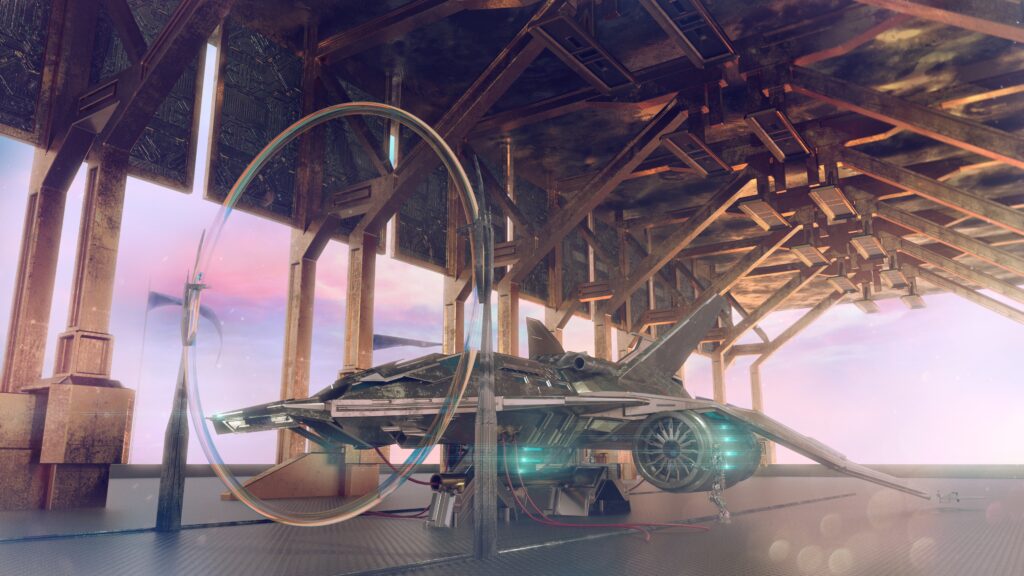
MTSM – Magnetic Transport Systems
The magnetic field space ship is a concept for a spacecraft that uses a magnetic field to propel itself through space.The magnetic field would be generated by a large superconducting magnet, and would be used to create a force that would push the spacecraft forward.
Themagnetic field space ship has several advantages over traditional spacecraft.First, it would be much more efficient. Traditional spacecraft use rockets to propel themselves, which require a large amount of fuel. The magnetic field space ship would not require any fuel, as it would use the magnetic field to generate its own propulsion.
Second, the magnetic field space ship would be much faster than traditional spacecraft.Rockets are limited by the speed of sound, which is about 340 meters per second.The magnetic field space ship would not be limited by the speed of sound, and could travel at much faster speeds.
Third, the magnetic field space ship would be much more maneuverable than traditional spacecraft.Rockets are difficult to maneuver, as they are subject to the laws of gravity.The magnetic field space ship would be able to maneuver much more easily, as it would not be subject to the laws of gravity.
Themagnetic field space ship is still a concept, and there are many challenges that need to be overcome before it can become a reality.However, the potential benefits of the magnetic field space ship are significant, and it is a promising technology for future space exploration.

Creating a planning schedule for an intergalactic magnetic transport system involves numerous speculative elements, given the current limitations of our technology and understanding of physics for such an endeavor. Nonetheless, laying out a hypothetical timeline helps in visualizing the steps needed to move from concept to reality, even if the actual implementation might stretch over centuries or beyond our current technological grasp.
### Phase 1: Conceptualization and Theoretical Foundations
– ** 1: Research and Development (R&D) Focus**
– Establish a dedicated research team.
– Literature review on existing magnetic propulsion technologies and theoretical physics.
– Identify potential energy sources capable of supporting intergalactic distances.
– **2: Theoretical Modeling and Simulation**
– Develop theoretical models of magnetic propulsion mechanisms capable of intergalactic travel.
– Run simulations to test the feasibility of proposed models.
– Begin preliminary designs of spacecraft utilizing magnetic propulsion technologies.
– **3: Technological Development and Miniaturization**
– Focus on the development of technology required for magnetic propulsion, including superconductors, energy storage, and magnetic field generators.
– Start experiments to test the scalability of magnetic propulsion systems.
– **4: Prototype Development**
– Construct a prototype of the magnetic propulsion system.
– Conduct Earth-based tests to evaluate the prototype’s performance.
– Identify and address technological and engineering challenges.
### Phase 2: Testing and Refinement
– **2-1: Initial Space Tests**
– Launch test missions within the solar system to evaluate the propulsion system’s performance in space.
– Begin developing the technologies for long-duration human spaceflight, including life support and radiation protection.
– **2-2: Advanced Space Probes**
– Send unmanned probes to the outer solar system and nearby interstellar space using magnetic propulsion technologies.
– Collect data on interstellar medium and potential hazards of intergalactic space.
– **2-3: Refinement and Miniaturization**
– Refine magnetic propulsion technology based on data gathered from probes.
– Miniaturize technology to be more efficient, safer, and suitable for larger crewed spacecraft.
### Phase 3: Crewed Missions and Intergalactic Exploration
– **3-1: Crewed Missions within the Solar System**
– Begin crewed missions to Mars, the asteroid belt, and the outer planets using magnetic propulsion systems to test human factors.
– **3-2: Construction of the Intergalactic Vessel**
– Start the construction of an intergalactic spacecraft designed for long-term human habitation and travel.
– Test new systems for sustainability, including closed-loop life support and energy production.
– **3-3: Advanced Simulations and Training**
– Conduct advanced simulations to prepare the crew for intergalactic travel’s psychological and physiological challenges.
– Finalize mission plans, including navigation routes, objectives, and contingency measures.
– **3-4: Launch of the Intergalactic Mission**
– Launch the first crewed mission beyond our galaxy, depending on the propulsion system’s readiness and other technological and logistical preparations.
– Continuous monitoring and support from Earth, with potential for establishing waypoints or stations en route if technology allows.
### Beyond
– **Long-term Exploration and Colonization**
– Depending on the outcomes of initial missions, focus shifts to exploration, potential colonization, and the establishment of human presence in other galaxies.
– Continuous improvement and iteration of magnetic propulsion technology based on intergalactic travel experience.
Given the vast distances and challenges involved, each phase is speculative and would depend heavily on breakthroughs in physics, energy production, and material science. Such a schedule serves more as a thought experiment in project management and long-term planning for humanity’s ultimate venture into intergalactic space.

BHEE – BLACK HOLE ENERGY ENGINE
BHEE: Black Hole Energy Engine – Propulsion for Interstellar Navigation
Overview
The Black Hole Energy Engine (BHEE) is a revolutionary propulsion system developed by PMI Holding for high-precision, subluminal interstellar transport. It leverages the extreme spatial curvature and energetic environments surrounding black holes as natural synchronizers for directional impulse generation. The BHEE system represents a new class of non-kinetic, resonance-based propulsion technology.
How It Works
BHEE operates through the modulation of high-energy electromagnetic-gravitational (EM-GRAV) waves, generated within a stabilized plasma resonance chamber. This system is powered by a cryogenically regulated boron-deuterium plasma core, which emits subluminal directional pulses without ejecting mass.
Rather than generating thrust in the classical sense, the BHEE induces controlled local spacetime curvature, using external gravitational reference points — specifically, Φ-nodes assigned to black hole regions — for guidance and acceleration.
Core Components
- BHEE Resonance Chamber
A fusion-grade EM-GRAV chamber featuring a spiral waveguide configuration, operating within an isolated superconducting shell under <7 K.• Φ-nav System
A galactic-scale navigational mesh based on gravitational reference points, or Φ-nodes, centered around supermassive and stellar-mass black holes. Enables real-time synchronization and vector correction.• Impulse-Based Control Architecture
All onboard systems are managed without conventional wiring. Commands are transmitted via a distributed nano-impulse grid embedded in structural and sensor materials.• Plasma Power Supply
The boron-deuterium reactor generates a clean, controllable plasma field stabilized by NbTi cryogenic flow channels and self-regulated energy harmonics.
Operational Performance
|
Mode |
Effective Speed |
Description |
|
Directional Pulse Mode |
up to 0.3c |
Subluminal impulse, free-space operation |
|
Curvature-Sync Mode |
up to 0.5c |
Spacetime deformation via synchronized Φ-nodes |
|
Speed Constraint |
< c |
Fully compliant with General Relativity (OTW) |
What Makes BHEE Unique
- No mass ejection or chemical propulsion – Propulsion is achieved through EM-GRAV modulation.
• Impulse logic without cables – Fully wireless internal control grid.
• Zero-emission directional impulse – Safe for enclosed and deep-space operation.
• Φ-nav compatibility – Integrated with galactic gravitational reference points.
• Expandable for crewed missions – Supports hybrid landers and life support systems.
Φ-nav Navigation Map – BHEE Trajectory Framework
This interactive model presents Φ-nodes associated with known black holes across the observable universe. It serves as a foundation for interstellar navigation using the BHEE (Black Hole Energy Engine), enabling synchronized travel along mapped gravitational anchors. Use zoom and drag functions to explore the full trajectory mesh.
